★★★
“Calamity Plain.”
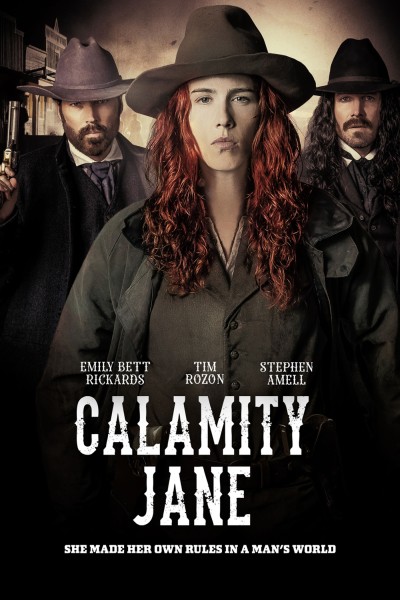 Calamity Jane and Wild Bill Hickok are two of the most well-known names in the culture of the Wild West, though the reality of both individuals is almost impossible to separate from the myths which surround them. So it’s kinda pointless to complain about historical accuracy in films which focus on them. Better just accept them as effectively being fictional entities, which can be used for whatever purpose a filmmaker desires. Here, it’s the death of Wild Bill (Stephen Amell, best known as TV’s Arrow) in a poker game, which sets his girlfriend Jane (Rickards, also from the same series) off. She goes on the trail of Jack McCall (Allon), the scumbag responsible, who has understandably opted to depart Deadwood.
Calamity Jane and Wild Bill Hickok are two of the most well-known names in the culture of the Wild West, though the reality of both individuals is almost impossible to separate from the myths which surround them. So it’s kinda pointless to complain about historical accuracy in films which focus on them. Better just accept them as effectively being fictional entities, which can be used for whatever purpose a filmmaker desires. Here, it’s the death of Wild Bill (Stephen Amell, best known as TV’s Arrow) in a poker game, which sets his girlfriend Jane (Rickards, also from the same series) off. She goes on the trail of Jack McCall (Allon), the scumbag responsible, who has understandably opted to depart Deadwood.
Complicating matters is that Jane is in custody herself, having been brought to the frontier town by Sheriff Mason (Rozen), to stand trial for murder. She escapes his custody – as Chris pointed out, Mason is a bit crap at the whole law enforcement thing – and heads off after McCall and his equally scummy brother. Mason assembles a (again, rather feeble and unimpressive) posse to go after the two suspected killers. Most of the second half is an extended pursuit through some very scenic landscapes, it must be said. There are a fair number of moderate diversions before the inevitable and entirely expected confrontation between Jane and Jack, as she seeks to get vengeance, or perhaps justice, for her murdered lover.
I think I like the characters here most. Rickards gives a winning portrayal as Jane, despite an unnerving similarity to one of the members of Bananarama (perhaps that’s just me though), and the supporting cast also do a good job of inhabiting their roles. It is fairly straightforward: black hats and white hats, with not much grey in terms of morality. In this way, it feels like a throwback to an earlier time. Along similar lines, while the language is fairly ripe, with a good number of F-bombs, the violence is very restrained by comparison. I feel if a film is going to have an R-rating, the makers need to embrace that artistic freedom fully, yet outside of the cursing, this would likely merit only a PG.
Among the supporting cast, the best is Abigail (Faia), who is entirely mad, and all the more entertaining for it. She boasts of the multiple people she’s killed, keeping a count with scars on her arms – I’d love to see a film of her back-story. She and Jane end up in a very nasty brawl, likely the action highlight of the film, with everything else being gunfights of the “Bang-bang, you’re dead” variety. While it’s all well enough assembled, there isn’t much indication of ambition or desire to tell a new story, or even an old one from an interesting direction. As a result, this only intermittently catches fire, preferring mostly to meander along safely, well within the speed limit and with its seat-belt securely fastened.
Dir: Terry Miles
Star: Emily Bett Rickards, Tim Rozon, Primo Allon, Priscilla Faia





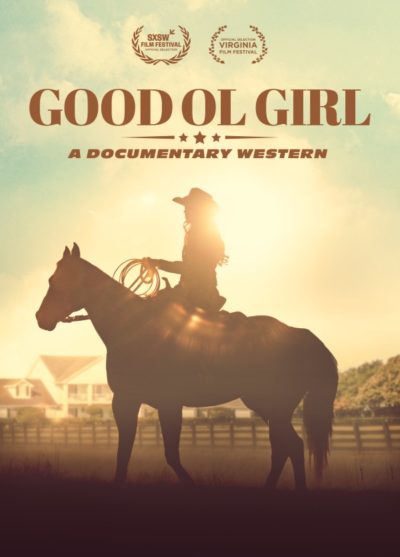 This documentary takes a look into the lives of three women in Texas, who are all operating in the male-dominated world of ranching. Some were born into it, while others came to it through choice. In particular, Mandy Dauses falls into the latter category, having left her East-coast home because she felt that Texas represented the best chance to fulfill her ambition of becoming a ranch manager. On the other hand, Sara Lemoine Knox is struggling to balance what she feels is an obligation to carry on in the family business, with her own goal of becoming a lawyer. Meanwhile, Martha Santos is looking to find work in that line, but without her own property, is finding it a challenge.
This documentary takes a look into the lives of three women in Texas, who are all operating in the male-dominated world of ranching. Some were born into it, while others came to it through choice. In particular, Mandy Dauses falls into the latter category, having left her East-coast home because she felt that Texas represented the best chance to fulfill her ambition of becoming a ranch manager. On the other hand, Sara Lemoine Knox is struggling to balance what she feels is an obligation to carry on in the family business, with her own goal of becoming a lawyer. Meanwhile, Martha Santos is looking to find work in that line, but without her own property, is finding it a challenge.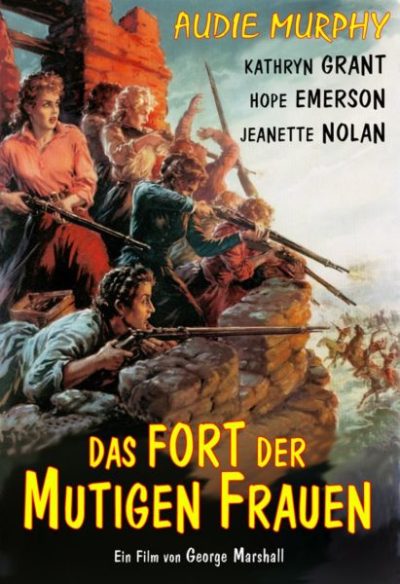 This is one where you need to take the era into account. Made in 1957, this was based on a short story from a couple of years earlier: “Petticoat Brigade” by Chester William Harrison. It’s very much an Audie Murphy movie – and understandably so, since the man was a bona fide hero, being one of the most-decorated American combat soldiers in World War II, before he became an actor. But the fifties was not a decade known for strong, independent female characters in Hollywood Westerns. We’ve covered a few:
This is one where you need to take the era into account. Made in 1957, this was based on a short story from a couple of years earlier: “Petticoat Brigade” by Chester William Harrison. It’s very much an Audie Murphy movie – and understandably so, since the man was a bona fide hero, being one of the most-decorated American combat soldiers in World War II, before he became an actor. But the fifties was not a decade known for strong, independent female characters in Hollywood Westerns. We’ve covered a few: 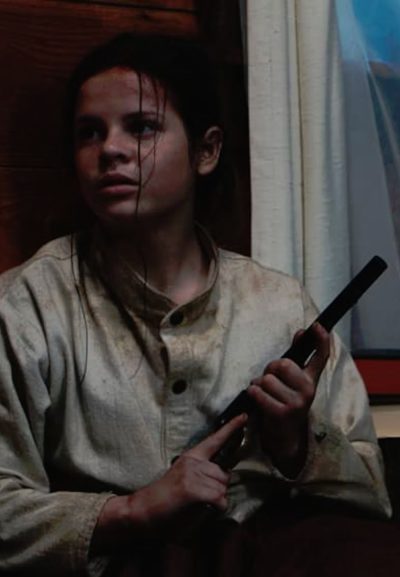 This one does take a while to reach the necessary threshold: probably only truly qualifies for the final twenty minutes or so, though it does talk a good game until that point. Also, it’s a decent enough combination of Western and home-invasion genres to that point, to pass muster. Nothing special, mind you. It just knows its limitations and is careful enough to work within them. It takes place in the Old West. whee Beth (Bernadette) and her twin children, Brian and Irene (Betsy) now live with her new husband, Robert (Krause). The trio appear to have escaped an abusive relationship, and it’s not long after a railroad surveyor pays a visit, before Irene is cheerfully telling him, she’s going t go back and killer her father some day.
This one does take a while to reach the necessary threshold: probably only truly qualifies for the final twenty minutes or so, though it does talk a good game until that point. Also, it’s a decent enough combination of Western and home-invasion genres to that point, to pass muster. Nothing special, mind you. It just knows its limitations and is careful enough to work within them. It takes place in the Old West. whee Beth (Bernadette) and her twin children, Brian and Irene (Betsy) now live with her new husband, Robert (Krause). The trio appear to have escaped an abusive relationship, and it’s not long after a railroad surveyor pays a visit, before Irene is cheerfully telling him, she’s going t go back and killer her father some day. I never thought I’d find a film which would leave me yearning for the subtle and understated pleasures of the original I Spit on Your Grave, but here we are. 35 years on, and this cringeworthy copy was made, transplanting events to the old West. A further decade later: with a couple of re-titlings which jostle each other for inappropriateness, it’s out on number of free movie streaming platforms. I’m here to tell you, not to bother. Even in the low-rent neighbourhood which is rape-revenge movies, you could close your eyes, pick a random entry, and be almost guaranteed to find something with a better script and general execution.
I never thought I’d find a film which would leave me yearning for the subtle and understated pleasures of the original I Spit on Your Grave, but here we are. 35 years on, and this cringeworthy copy was made, transplanting events to the old West. A further decade later: with a couple of re-titlings which jostle each other for inappropriateness, it’s out on number of free movie streaming platforms. I’m here to tell you, not to bother. Even in the low-rent neighbourhood which is rape-revenge movies, you could close your eyes, pick a random entry, and be almost guaranteed to find something with a better script and general execution.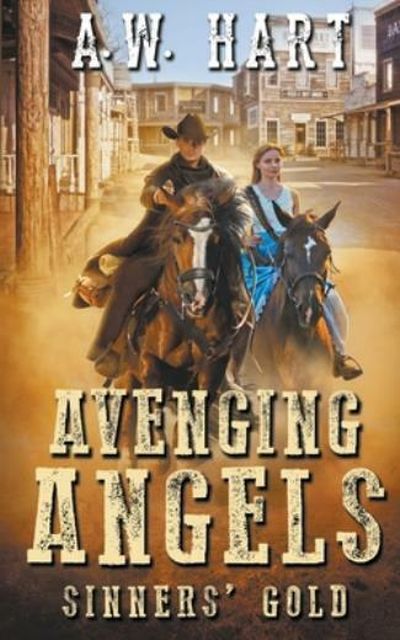 “A. W. Hart,” the nominal author of the Avenging Angels series, is actually a house pen name used by Wolfpack Publishing for the multiple authors of this and one or two of their other series. Where books are marketed or shelved by the author’s name, this device allows a series to be kept together. It also makes it possible for the same main character(s) to be featured in a number of adventures, without being limited to the imagination or time constraints of a single author.
“A. W. Hart,” the nominal author of the Avenging Angels series, is actually a house pen name used by Wolfpack Publishing for the multiple authors of this and one or two of their other series. Where books are marketed or shelved by the author’s name, this device allows a series to be kept together. It also makes it possible for the same main character(s) to be featured in a number of adventures, without being limited to the imagination or time constraints of a single author.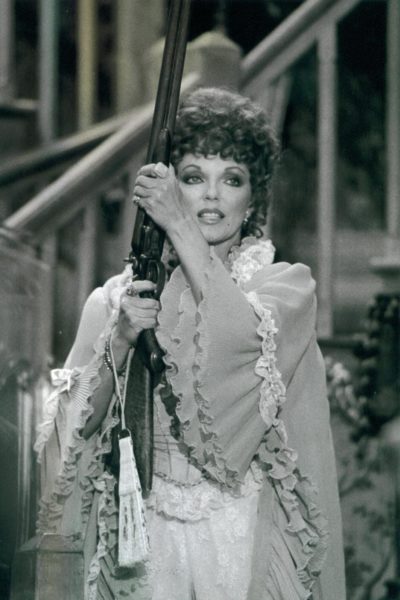 This sprightly TV movie from 1982 boasts a rather decent cast and, at least in the first half, manages to go in unexpected and interesting direction. It does end up descending into rather familiar territory thereafter, and the finale doesn’t manage to be as rousing as it should be. Yet it managed to keep my interest, and as this genre goes, that probably makes it better than average. It takes place in the last stages of the American Civil War, when the Southern women of Sweetwater have been left bereft of men, after the Confederate Army has recruited them all to their cause. Newly arrived in town is doctor Maggie McCulloch (Barnes), who has arrived to help her ailing aunt, Annie (Collins). She is shocked to discover Annie is less the mine owner touted in her letters, and more the owner of the town brothel.
This sprightly TV movie from 1982 boasts a rather decent cast and, at least in the first half, manages to go in unexpected and interesting direction. It does end up descending into rather familiar territory thereafter, and the finale doesn’t manage to be as rousing as it should be. Yet it managed to keep my interest, and as this genre goes, that probably makes it better than average. It takes place in the last stages of the American Civil War, when the Southern women of Sweetwater have been left bereft of men, after the Confederate Army has recruited them all to their cause. Newly arrived in town is doctor Maggie McCulloch (Barnes), who has arrived to help her ailing aunt, Annie (Collins). She is shocked to discover Annie is less the mine owner touted in her letters, and more the owner of the town brothel.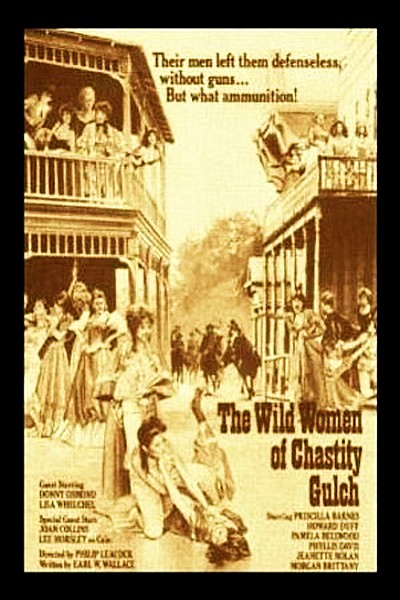 That aside, the plot unfolds largely as you’d expect. There’s the initial tension between whores and housewives, and the women struggle to come to terms with the everyday business of running the town. For example, there’s a fire drill, which ends up with half the ladies thrashing around in shallow water, and some other slapstick involving whitewash, that is somewhere between lightly amusing and embarrassing. However, Barnes – at the time a sitcom star in Three’s Company – does a very good job of keeping the film grounded, and the supporting cast help admirably in that aspect. Collins is particularly good, projecting an attitude which clearly proclaims she will take no shit from anyone.
That aside, the plot unfolds largely as you’d expect. There’s the initial tension between whores and housewives, and the women struggle to come to terms with the everyday business of running the town. For example, there’s a fire drill, which ends up with half the ladies thrashing around in shallow water, and some other slapstick involving whitewash, that is somewhere between lightly amusing and embarrassing. However, Barnes – at the time a sitcom star in Three’s Company – does a very good job of keeping the film grounded, and the supporting cast help admirably in that aspect. Collins is particularly good, projecting an attitude which clearly proclaims she will take no shit from anyone.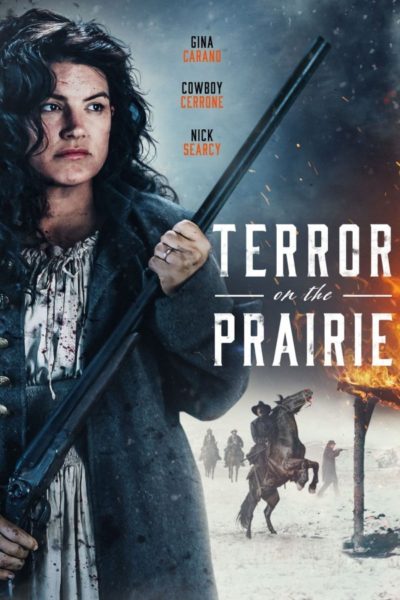 I keep hoping Carano will deliver an action film reaching the quality of her debut,
I keep hoping Carano will deliver an action film reaching the quality of her debut,  30 years old, Willa sees herself as an “old maid.” She’s the eldest of three half-sisters, daughters of peripatetic ne’er-do-well Finn Malone, who outlived two wives (and was deserted by a third) in the course of his wanderings, which in 1889 led him to a homestead in the small community of Sweet Clover. Like many of the townsfolk, he was heavily in debt to conniving banker Theodore Pierce, and used his land as collateral. But he’s now recently dead, murdered after he took off on his latest quest for gold. At the moment, the farm isn’t productive; without him, the sisters won’t be able to repay the loan, and they’ll lose their home within months.
30 years old, Willa sees herself as an “old maid.” She’s the eldest of three half-sisters, daughters of peripatetic ne’er-do-well Finn Malone, who outlived two wives (and was deserted by a third) in the course of his wanderings, which in 1889 led him to a homestead in the small community of Sweet Clover. Like many of the townsfolk, he was heavily in debt to conniving banker Theodore Pierce, and used his land as collateral. But he’s now recently dead, murdered after he took off on his latest quest for gold. At the moment, the farm isn’t productive; without him, the sisters won’t be able to repay the loan, and they’ll lose their home within months.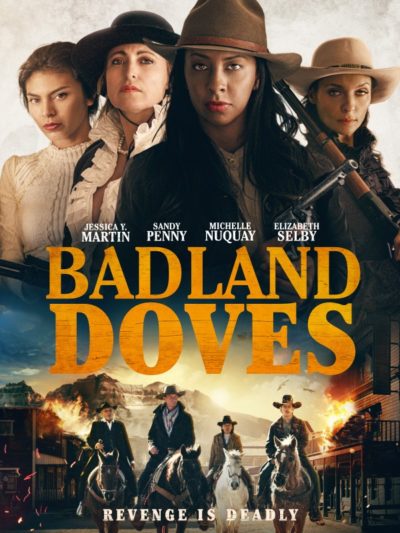 I am contractually obliged to appreciate at least somewhat, any film made here in Arizona. This certainly fits the bill, having been shot at places like the Pioneer Living History Museum, Sitgreaves National Forest and Winters Film Group Studio. However, it is a fairly basic tale of two-pronged revenge, with significant pacing issues. The proceedings only come to life in the last 20 minutes – and barely that. Initially, matters are more than a tad confusing, as we jump about in time and space without apparent notification. But the basic principal is eventually established.
I am contractually obliged to appreciate at least somewhat, any film made here in Arizona. This certainly fits the bill, having been shot at places like the Pioneer Living History Museum, Sitgreaves National Forest and Winters Film Group Studio. However, it is a fairly basic tale of two-pronged revenge, with significant pacing issues. The proceedings only come to life in the last 20 minutes – and barely that. Initially, matters are more than a tad confusing, as we jump about in time and space without apparent notification. But the basic principal is eventually established.